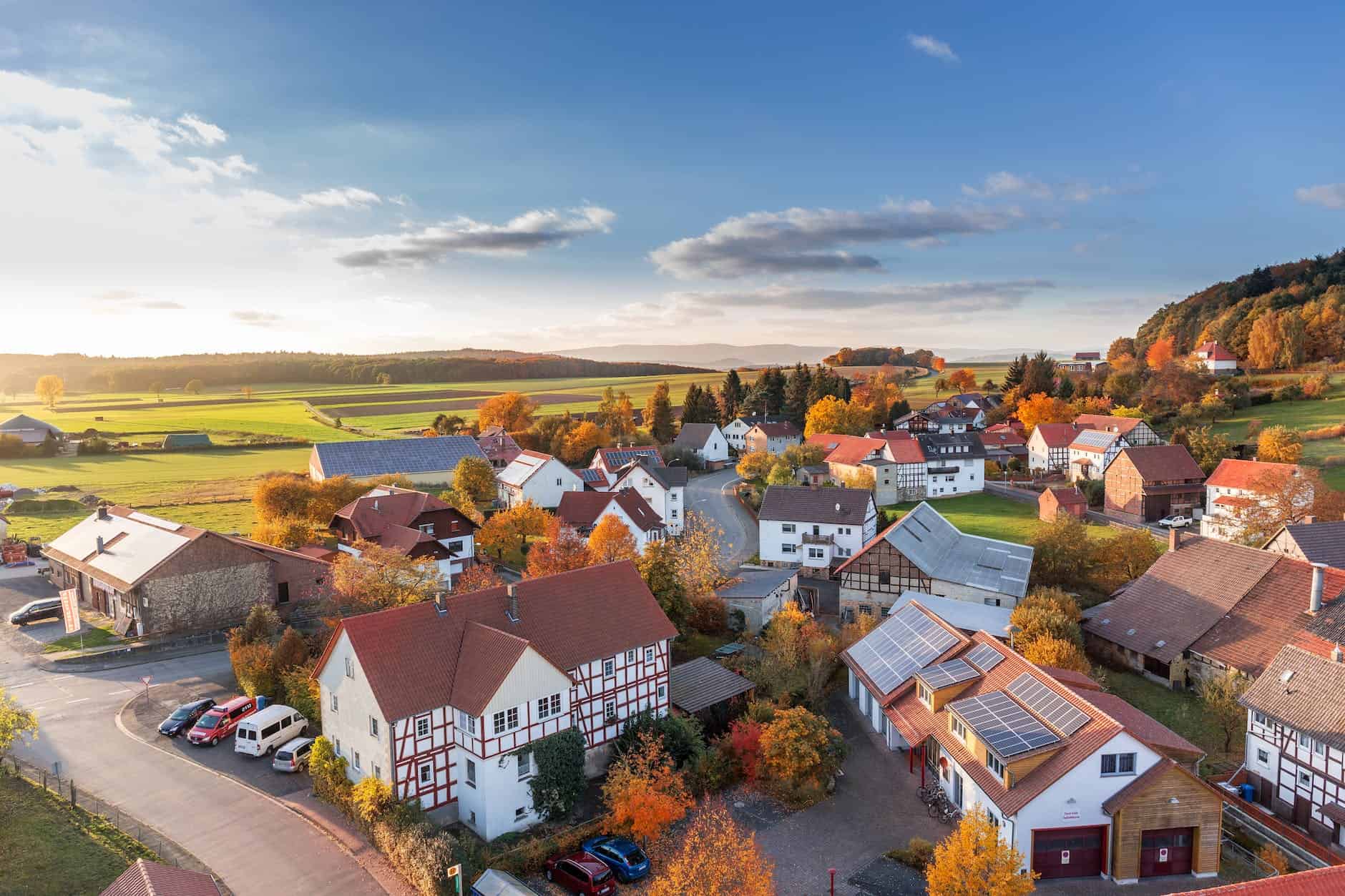Arpeggiator
Shared System Tutorials – Arpeggios

Shared System Tutorials – Arpeggios
I guess this is a logical sequel to part 29. In this episode we’re going to use Maths LFO’s and translate them to arpeggios with the help of the Rene built in quantizer to create all kinds of dreamy soundscapes, whirls and spirals.
Arpeggiator
HEXO Arpeggiator & Sequencer
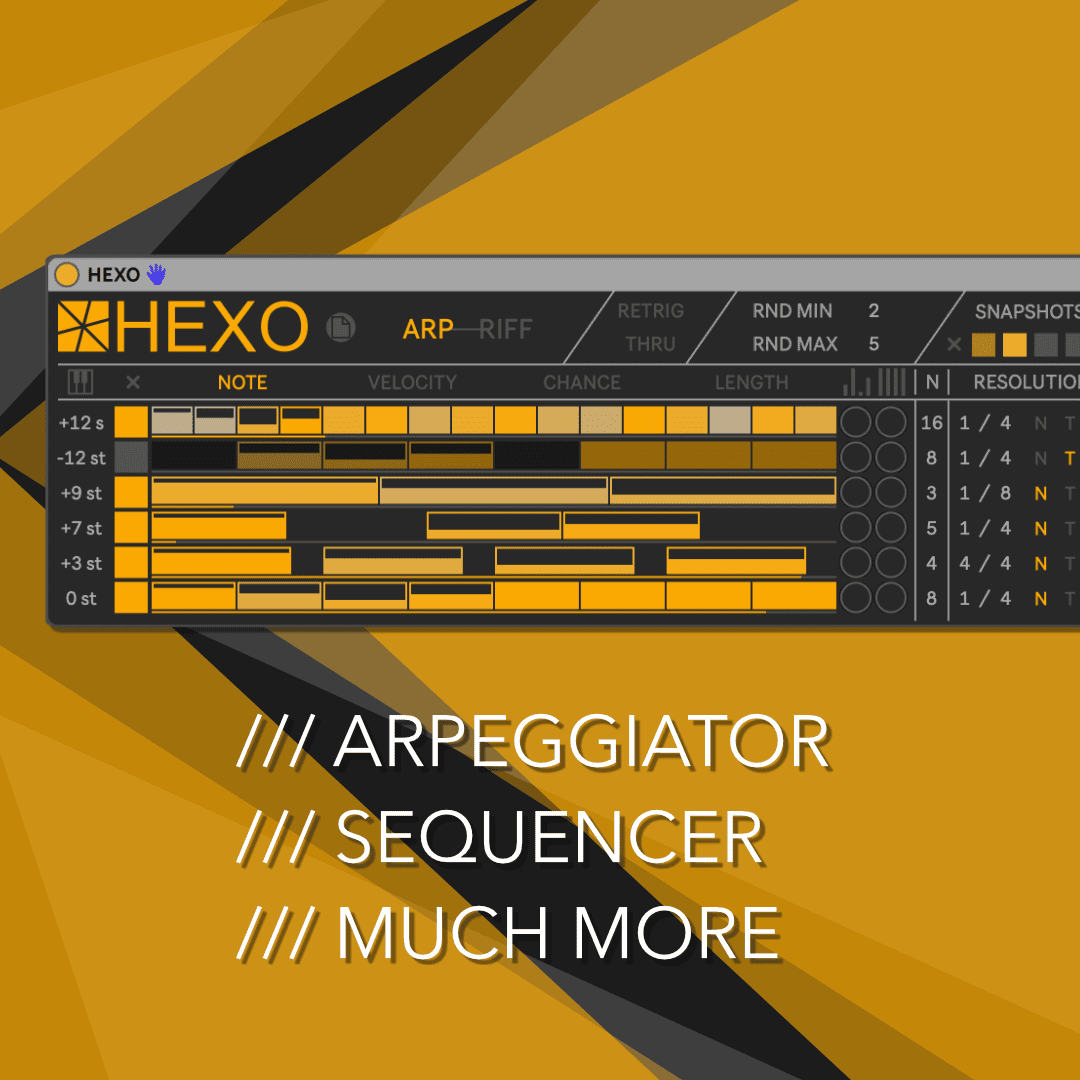
HEXO Arpeggiator & Sequencer
The core of HEXO is the pattern editor: the Grid. The Grid is a deep six-track sequencer, where you can meticulously write your patterns, thanks to a lot of parameters available per step, exclusive per-track time values, and global utilities.
Range-based random functions are also available as inspiration or smart kickoff for your search for the perfect pattern. HEXO loves to go polyrhythmic, polymetric, or both. It also likes catchy 4/4 stuff, of course!
According to the selected main mode, ARP or RIFF, you can set intervals or notes for each track, and thanks to the live input function, you can set these values by holding up to six notes on your MIDI keyboard; you can change the harmony on the fly, while the pattern is running.

Omnisphere
Nordic an Omnisphere by Triple Spiral Audio is now available
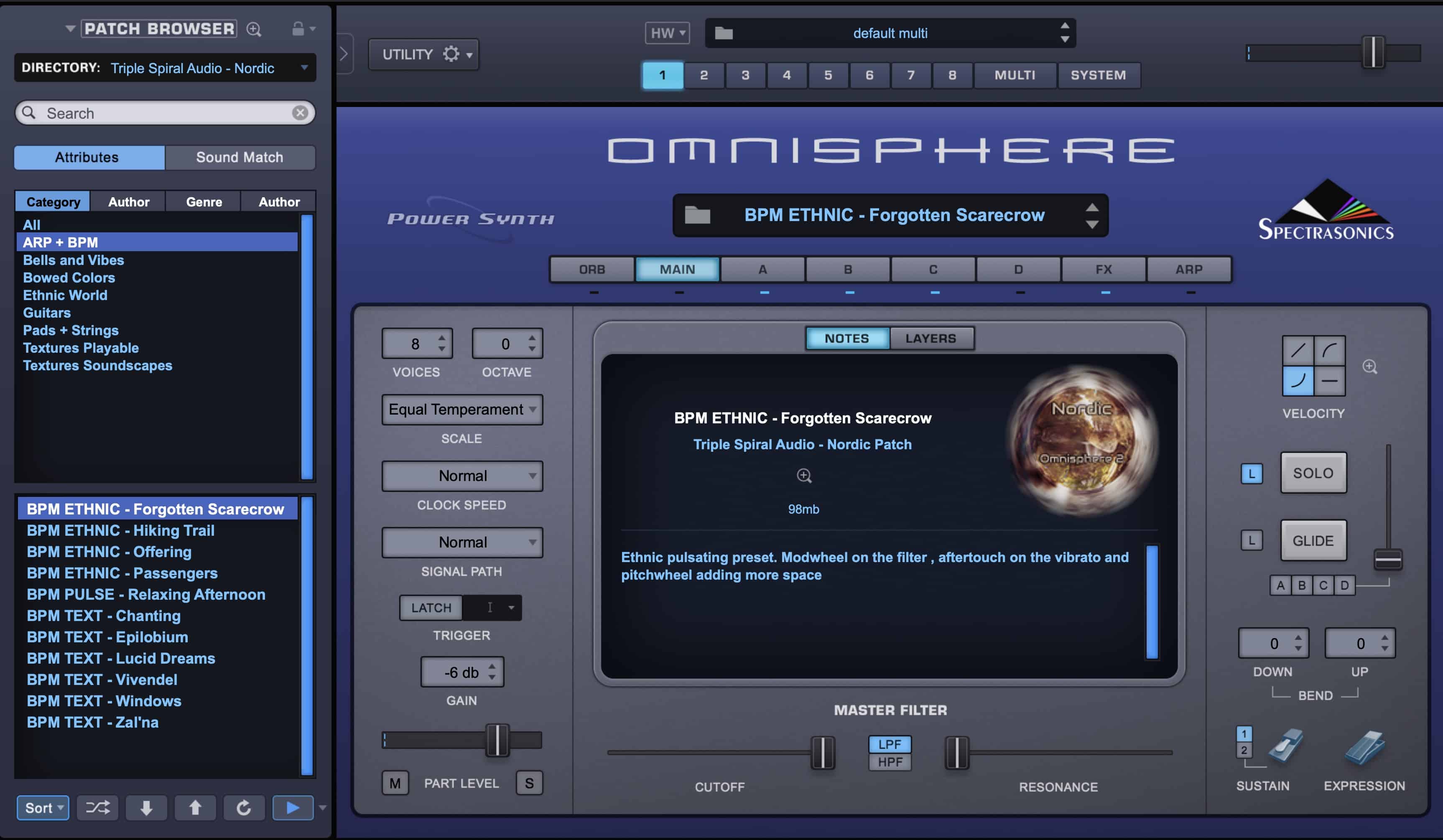
Nordic an Omnisphere soundset is now available
Nordic is a new soundset for Omnisphere 2 with an ambient character, perfect for use in underscoring and use in film, game, and library music productions and contains 128 presets and 25 multis. The soundset has found its inspiration in the beautiful nature and landscapes from Scandinavia. Originally this soundset had the working title Hardangervidda, named after a beautiful region in Norway. In this soundset, you will find a lot of nature recordings and sounds that Jaap Visser have recorded during his travels in Norway, Sweden, and Denmark.
Nordic will contain the following kind of presets: APR + BPM, Bells, and Vibes Bowed Colors, Ethnic World, Guitars, Pads, Textures Playable, and Textures Soundscapes. In the presets there is extensive use of the mod wheel, aftertouch, pitch wheel and sometimes
CC2 to enhance the sounds. The soundset Nordic comes with 128 presets, 25 multis. Created from 139 sound sources and is 514mb in size.

Pricing and Availability
Nordic can be purchased here, there is a time-limited introduction price available (until August, 1st 2019). The soundset is also part of Triple Spiral Audio’s (highly recommended) season pass. There is s Free Version available to get your feet wet as well here.

Modular System
Sinfonio by Audiophile Circuits League Ready for Pre-Order
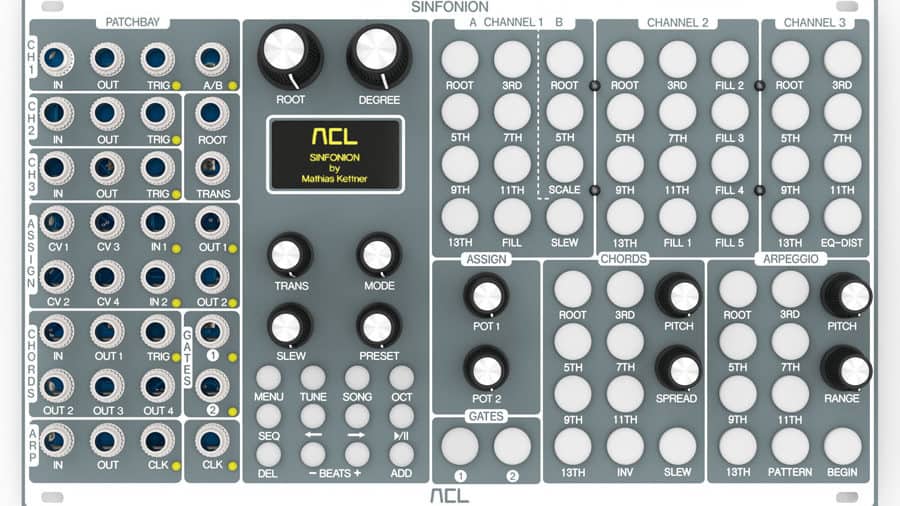
Unleash the power of your modular system with the Sinfonion. Not only is the Sinfonion the most complex and versatile quantizer, chord generator and arpeggiator in Eurorack format, it is also a very musical module and fun to use. It has been designed and programmed by Mathias Kettner and is produced by Audiophile Circuits League in Berlin.
The Sinfonion is designed for those musicians that do not want to be limited to creating “sound sculptures” or rhythmic grooves with their modular instruments but want all their fabulous VCOs and other voices to play together in the most musical and polyphonic way – may it be harmonic or even disharmonic on purpose. The Sinfonion comprises of three independent quantizer channels, a four-note chord generator, an arpeggiator and a complex progression sequencer in one. Thanks to a vast array of buttons and knobs placed around a sharp OLED display, it is easy to use and come up with musical ideas.
Sinfonion a control center of your modular system
With a total of 8 pitch outputs, 4 gate outputs, 11 CV inputs, and 9 gate inputs, it offers a large number of controls. Its plethora of buttons makes it an actual instrument you can play. Furthermore, the Sinfonion features an expansion port to add modules and expand functionality in the future. The three quantizer channels provide direct access to harmonic scale notes via dedicated buttons per channel (Root, 3rd, 5th, 7th, 9th, 11th, 13th). The buttons are made for jamming, controlling the sequences on the go. A fast processor allows quantization times below 1ms.
Chord, Sequencer & Arpeggiator
A chord section generates four pitch outputs, allowing to create four-voiced chords. It offers a lot of options directly accessible from the front panel. Thanks to dedicated knobs for pitch and spread, buttons for selecting the notes chord inversion and optional slew, you can get the chord you are looking for in no time. The arpeggiator section features 8 different patterns, dedicated knobs for pitch and range, and an array of buttons for selecting the scale notes and the pattern (Up, Down, Up/Down, Down/Up, Baroque, Octaves, Brownian, Random).

Arpeggiator
Eight different basic patterns
Dedicated knobs for pitch and range
Buttons for selecting scale notes
Buttons for selecting the pattern and start note
Chord Progression Sequencer
- 16 songs with 4 parts each and 32 steps (chord changes) per part
- Chord progression via clock, button, gate or CV
- Sequencing of chord voicings, octave switches and scale note selections

All these sections are under control of the Chord Progression Sequencer. It is the brain of the Sinfonion and is operated easily thanks to the display. You can change the root, degree, and mode by simply turning the according to knobs. It enables the creation of 16 songs with 4 parts each, and 32 steps per part. This comprises the sequencing of chord voicings, octave switches, and scale note selections.
Chord Generator
- Four pitch outputs to be used for four-voiced chords and other stuff
- Dedicated knobs for pitch and spread
- Buttons for chord inversion and optional slew (portamento)
- Buttons for selecting interval functions for the chord, 98 different voicings
Sinfonion Features
- 52 large buttons, 12 small buttons, 12 knobs, 32 jacks
- An OLED display with a resolution of 128 x 64 pixels
- 8 pitch outputs, 4 gate outputs, 11 CV inputs, 9 gate inputs
- STM32F446 MCU running at 180 MHz
- 8 highly accurate low jitter 16-bit DACs scaled to an output range from -2 V to +8 V
- 16 highly accurate low jitter 16-bit ADCs covering a range from -10.24 V to +10.24 V
- Expansion port for future expansion modules and for firmware upgrade
- 88 built-in base scales, editable by adding and removing notes
- 7 dedicated CV inputs
- 4 general purpose CV inputs with 28 different assignable functions
- 2 general purpose gate inputs with 20 different assignable functions
- 2 general purpose gate outputs with 14 different assignable functions
- 2 general purpose pots with 28 assignable functions
- Harmonic Link: connect any number of Sinfonions in order to form a distributed “Super Sinfonion”
- Bultin mixing/routing matrix for pitch inputs and outputs
- No load/save necessary – everything is automatically saved
-

 Vetted2 months ago
Vetted2 months ago11 Best Gore Websites to Explore the Darker Side of the Internet
-

 Music Theory2 weeks ago
Music Theory2 weeks agoUnlocking Nature’s Harmony: The Power of 432 Hz Frequency in Sound & Music for Enhanced Living and Well-Being
-

 Vetted1 month ago
Vetted1 month ago15 Best Commercial Vacuum Cleaners for Heavy-Duty Cleaning Jobs
-

 Vetted2 months ago
Vetted2 months ago15 Best Essential Oils Brands to Elevate Your Aromatherapy Experience
-
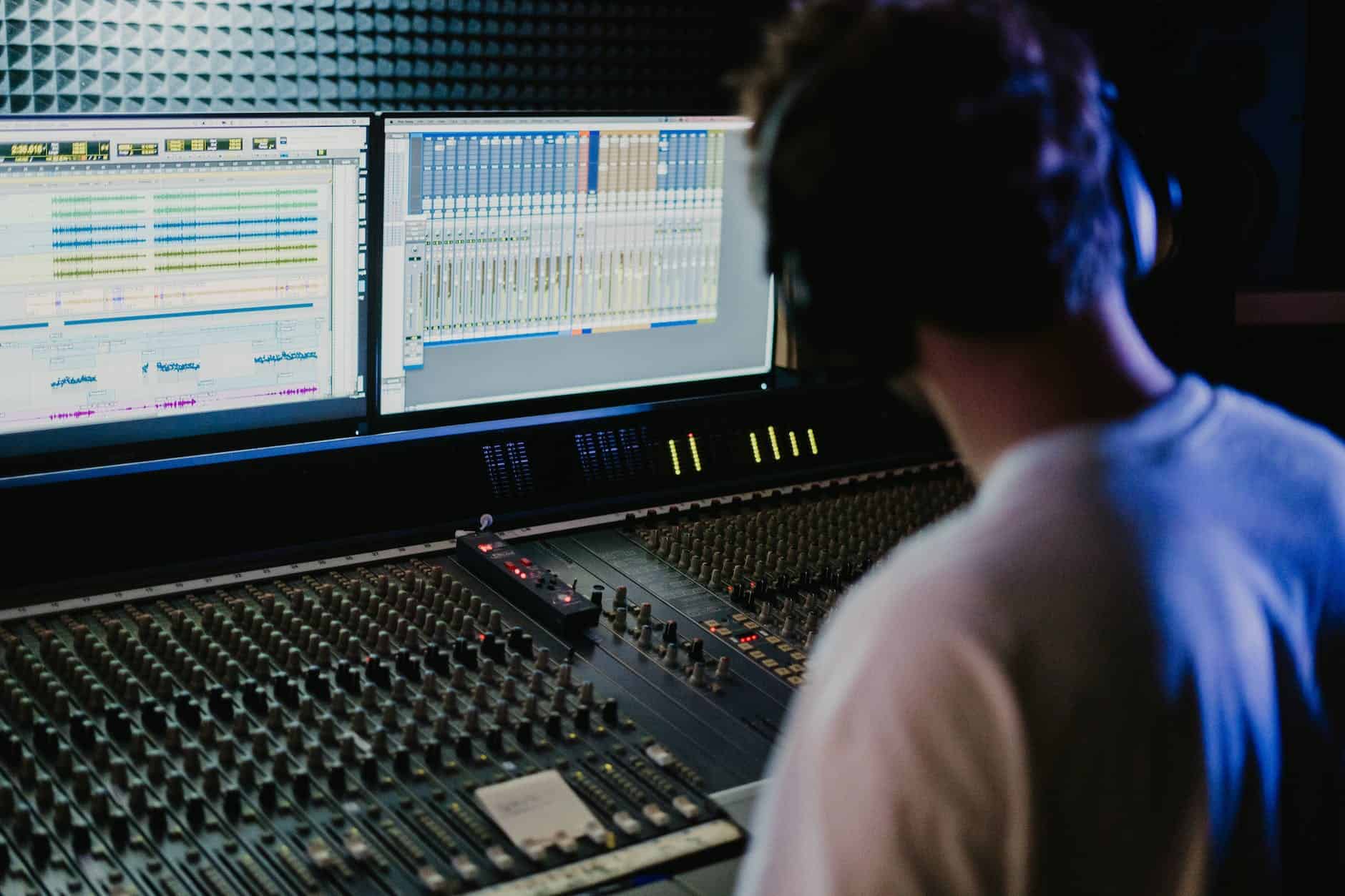
 Sound Design2 weeks ago
Sound Design2 weeks agoWhat Is the Difference Between a Sound Engineer and A Sound Designer?
-

 Native Instruments Kontakt2 weeks ago
Native Instruments Kontakt2 weeks agoVOCAL AI – Animated Intelligence: The Ultimate Vocal Playground
-
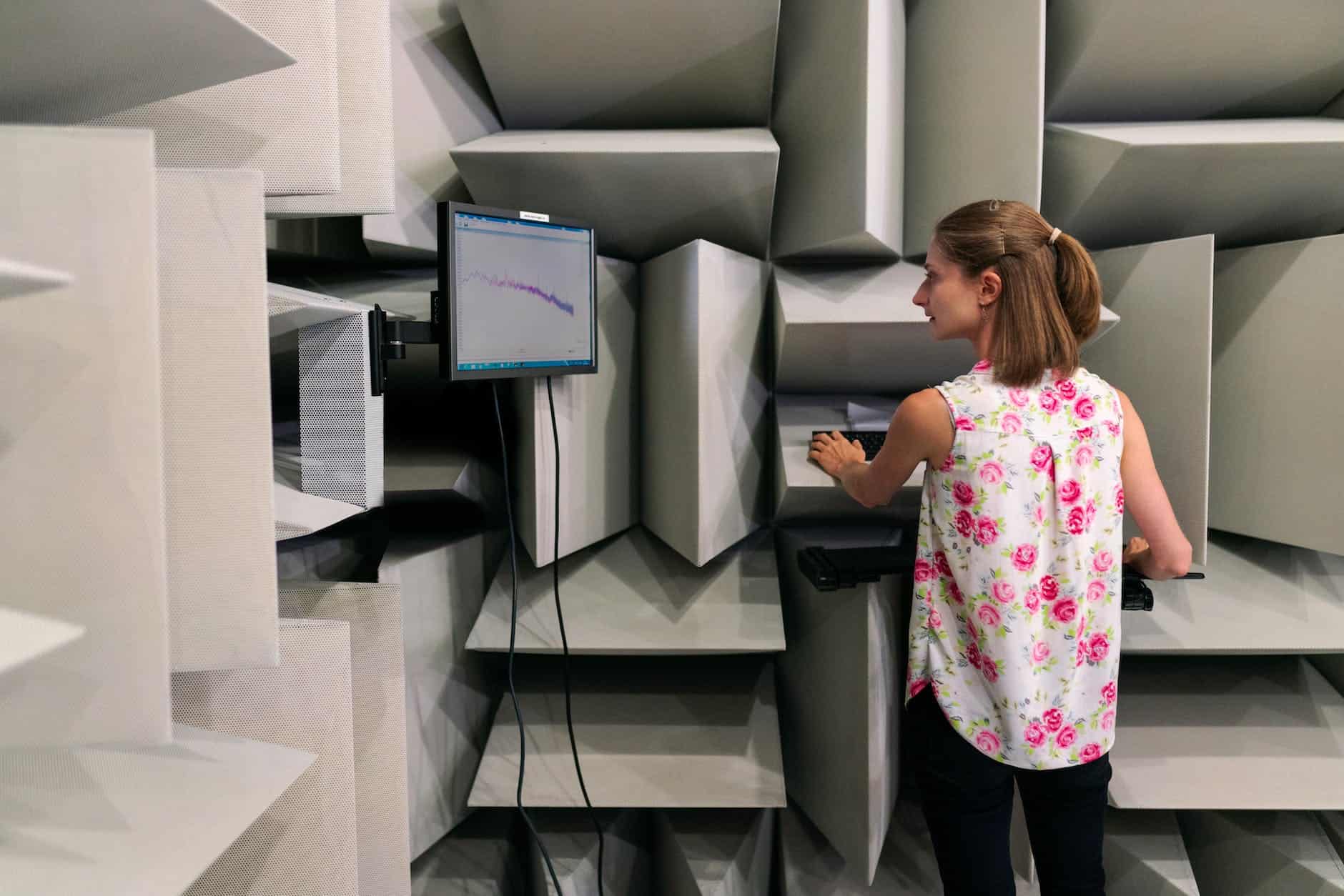
 Sound Design2 weeks ago
Sound Design2 weeks agoWhy Sound Engineer
-
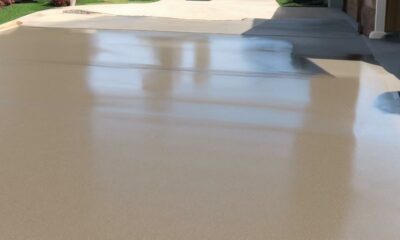
 Vetted2 months ago
Vetted2 months ago15 Best Concrete Sealers for Ultimate Protection and Longevity









